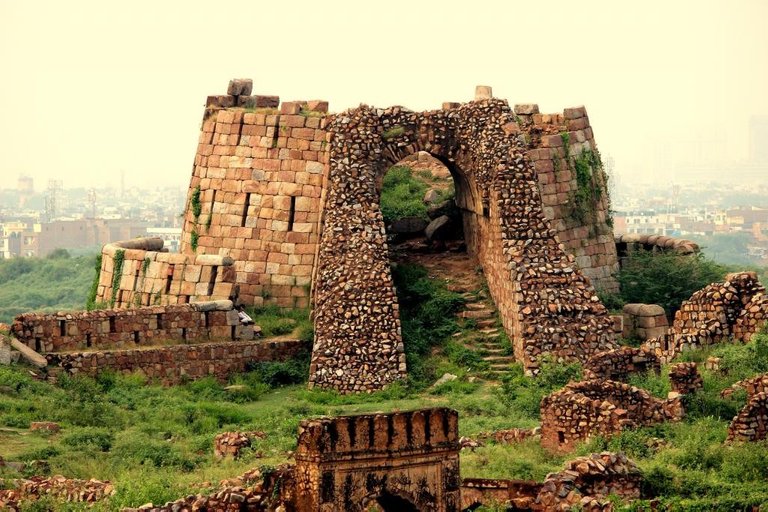
Tughlakabad was built by Ghiasuddin Tughlak or Ghazi Malik between 1321 and 1327 A.D. This architectural marvel unfortunately, was very ill fated because it was abandoned very soon after it was established. Before getting to one of the key legends explaining this sad turn of events, it would be interesting first to tell you a bit more about the city itself. Though today it remains only in the form of massive ruins, it is hard to believe that this huge complex was constructed within a period of six years. After defeating the last Khilji ruler, Ghiasuddin Tughlak took up the building of this fortified city to protect his people from the attacks of Mongols.
Built in an octagonal shape, this fort stretches over 7 kms on the Mehrauli-Badarpur road. With walls as high as 15 metres, it consisted of as many as 52 gates at one point of time, out of which only 13 remain today. Divided into three parts, this city was made of housing arranged on rectangular grids on one side, royal residencies on the other side, and the citadel with a tower as its highest point known as the Bijai-Mandal on the third side.
In spite of being highly planned, this city could never really take up a life of its own. Legend has it that Tughlakabad was cursed by sufi saint Hazrat Nizamuddin Auliya. According to this story, Ghiasuddin Tughlak was so keen on building this dream city of his that he stopped all other constructions happening in the city around that time so that workers could work only on the construction of Tughlakabad. This order of Ghazi Malik stalled the construction of a baoli that was being led by Nizamuddin Auliya. As a result of which the latter cursed Ghazi Malik’s city to a fate wilderness. While we cannot say whether or not this was the real reason for the failure of Tughlakabad, this legend sure makes one want to deeply revere Hazrat Nizamuddin’s shrine!